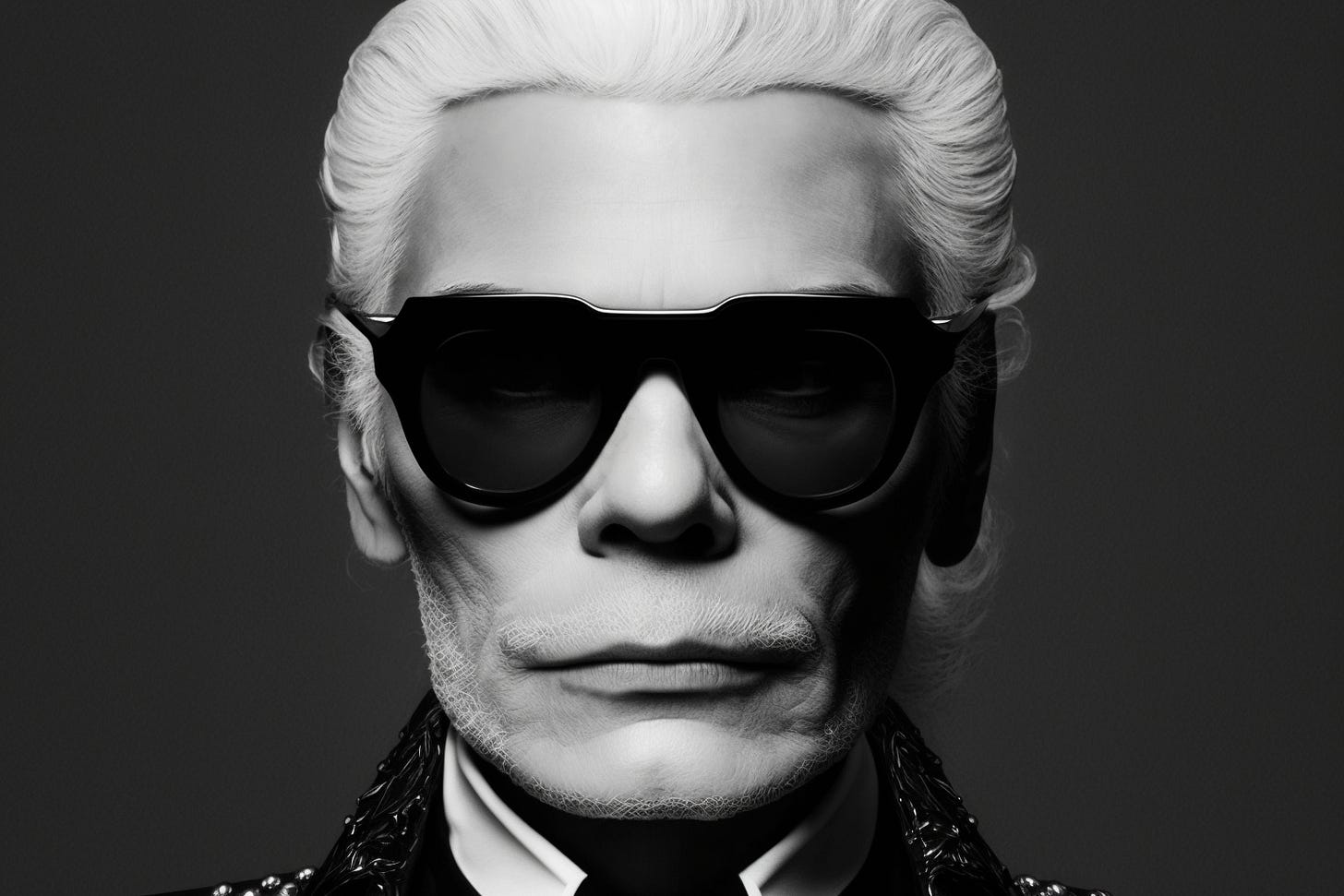Who was Karl Lagerfeld
Karl Lagerfeld: A Fashion Icon's Legacy and Influence on the World of Haute Couture
Karl Lagerfeld, a name synonymous with style, creativity, and innovation, left an indelible mark on the fashion industry. Known for his iconic white ponytail, dark sunglasses, and high-collared shirts, Lagerfeld's multifaceted career spanned decades and revolutionized the way we perceive fashion.
Born in Hamburg, Germany, in 1933, Karl Lagerfeld showed an early interest in the world of fashion. Growing up in a wealthy and cultured family, Lagerfeld's love for aesthetics was nurtured from a young age. His mother's influence, a lingerie boutique owner, fueled his passion for clothing and design. Lagerfeld's education at prestigious schools in Paris and Germany laid the foundation for his future in the fashion industry.
Lagerfeld's journey towards fame began in the early 1950s when he moved to Paris and started working as an assistant to renowned fashion designers. His innate talent and attention to detail quickly caught the attention of industry insiders, leading to collaborations with prestigious fashion houses such as Jean Patou and Chloé. Lagerfeld's innovative designs and ability to adapt to changing trends propelled him into the spotlight, establishing his reputation as a creative force to be reckoned with.
Lagerfeld's design aesthetic was a harmonious blend of tradition and innovation. He possessed an extraordinary ability to reinterpret classic styles while injecting his avant-garde touches, resulting in collections that were both timeless and daring. Lagerfeld's keen eye for detail, impeccable craftsmanship, and understanding of the evolving desires of fashion enthusiasts ensured that his designs remained relevant and captivating throughout his career.
As the creative director of Chanel, Lagerfeld breathed new life into the iconic brand. He fearlessly pushed boundaries and introduced modern elements while staying true to Coco Chanel's legacy. From the iconic Chanel suit to the double-C logo accessories, Lagerfeld's designs retained the essence of Chanel's elegance while infusing them with contemporary twists that appealed to a new generation.
Lagerfeld's creative contributions extended beyond Chanel though. His collaborations with Fendi, where he served as creative director for over five decades, resulted in boundary-pushing designs, particularly with the introduction of the iconic "Fendi Baguette" handbag. Additionally, his partnerships with high-street brand H&M and his own eponymous label showcased his versatility as a designer and his ability to cater to a wide range of audiences.
Beyond his creative genius, Karl Lagerfeld was equally renowned for his larger-than-life persona. With his signature look he cultivated an image that was instantly recognizable. Lagerfeld's enigmatic public image often overshadowed his contributions, making him an icon in his own right.
Lagerfeld was known for his quick wit, sharp tongue, and outspoken nature. His memorable quotes and unfiltered opinions on various subjects, from fashion to politics, often made headlines. Lagerfeld's public persona was both mysterious and intriguing, drawing curiosity and fascination from fans and critics alike.
His impact on popular culture extended beyond the fashion industry. Lagerfeld's collaborations with artists, musicians, and celebrities showcased his ability to bridge the gap between fashion and the broader creative world. His work with photographers, such as his longtime collaboration with Helmut Newton, resulted in iconic fashion editorials that pushed boundaries and challenged societal norms.
Karl Lagerfeld's legacy is a testament to his profound influence on the fashion industry. His unique design aesthetic, marked by a blend of tradition and innovation, revolutionized fashion houses and captivated fashion enthusiasts around the world. Lagerfeld's creative vision revived the iconic Chanel brand and propelled it to new heights of luxury and relevance.
Beyond his design contributions, Lagerfeld's influence can be seen in the rise of luxury brands. He understood the importance of brand image, creating a sense of exclusivity and desirability that elevated fashion houses to more of an aspirational status. Lagerfeld's meticulous attention to detail and his ability to anticipate and shape trends helped cement his position as a visionary within the industry.
Despite his undeniable talent, Lagerfeld was not without controversy and criticism. His unfiltered and often polarizing statements stirred debate within the fashion community and beyond. Lagerfeld's outspoken nature occasionally led to accusations of insensitivity and perpetuating unrealistic beauty standards. Critics argued that his promotion of a narrow, idealized body image clashed with the growing demand for diversity and inclusivity in fashion.
Moreover, Lagerfeld's controversial comments regarding social and political issues occasionally sparked backlash. His disregard for political correctness and inclination to speak his mind drew both admiration and condemnation. While some appreciated his honesty, others found his statements offensive or out of touch.
Balancing Lagerfeld's immense contributions with the controversies surrounding him presents a challenge. It underscores the complexity of his legacy and invites reflection on the evolving standards and expectations within the fashion industry.




